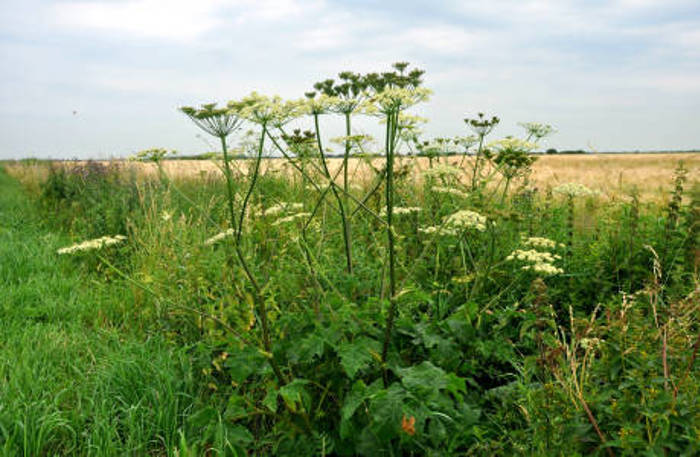In most cases, phototoxic reactions occur as a result of skin contact with phototoxic plants followed by exposure to ultraviolet rays from natural or artificial sunlight.
In order to cause a phototoxic reaction upon skin contact, most plant saps must remain in contact with the skin for 30-120 minutes. Umbellifers known to cause this type of skin reaction include Persian hogweed and giant hogweed (Heracleum sp.).
Symptoms of poisoning by phototoxic umbellifers
The main symptom is a skin rash.
The rash usually appears 1-3 days after exposure, and is limited to the areas that have been in contact with the plant and then exposed to sunlight.
The reaction has the appearance of severe sunburn, with reddening of the skin, blisters and severe stinging. The skin area may suffer prolonged hyperpigmentation (darkening of the skin) for up to several months after the phototoxic reaction.
The exposed area may also be hypersensitive to UV light for a long period of time (months to years) after the reaction.
First aid in the event of symptoms of poisoning by phototoxic umbellifers
- If you are aware that you have come into contact with a phototoxic plant before the skin reaction has occurred, wash the skin thoroughly with soap and water.
- You should also apply sunscreen and/or cover the skin area for at least 2 days after exposure, even if you do not have any symptoms.
- Bathing and swimming should also be avoided for 2 days, as this can lead to aggravation.
- In the case of severe/painful symptoms, you should seek medical attention for an assessment.
Other umbellifers
You can find out more about selected umbellifers here: Identifying poisonous umbellifers in Norway.
